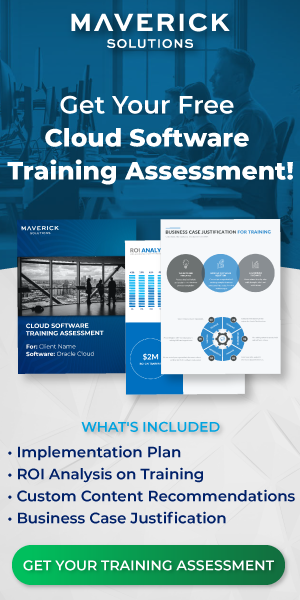The agile development method empowers your team to develop and launch project outcomes quickly and efficiently, and your team can use Oracle Project Portfolio Management (PPM) Cloud as your project management tool. Read on to discover how your team can use agile in Oracle PPM Cloud.
What is a scrum?
A scrum is an agile development workflow in which a scrum team completes a project in short bursts of time called sprints. A scrum team is composed of the following members:
- Scrum Master – The scrum master controls the direction of the team. This person leads the scrum.
- Product Owner – The product owner supplies customer information which ensures the product is tailored to the customer.
- Team members – Three or more people who develop the product and test backlog items.

What is agile?
The agile development method is centered around developing and launching products in relatively short bursts of time (sprints). Organizations complete projects under the agile development method because it allows them to deliver pieces of a larger product at brief time intervals (usually a week to a month), rather than deliver one complete product after a long development period (months or years). This enables organizations to continuously deliver value to their customers and stay relevant in the market. Agile is practiced primarily by software developers, but organizations in other industries can use this workflow for other types of products as well.
The components of an agile workflow include the following:
- Products: A product is the deliverable that a scrum team completes by the end of a sprint. A product can be thought of as a grouping of features that work together to fulfill a requirement. Products can be categorized under product families.
- Requirements: Requirements are objectives that the product must satisfy. Larger requirements can be broken down into smaller, more manageable tasks. For example, if a tax software product has a requirement of maximizing a user’s refund, then a smaller requirement might be delivering a list of all available credits and deductions for that user’s state.
- Backlog items: A backlog item is a feature that is meant to be included in the final, larger product. A scrum team determines which backlog items to focus on during a sprint based on priority. As a scrum progresses through multiple sprints, more backlog items are satisfied.
- User stories: A user story is a scenario of what a user would do with the product. This includes a profile of the user, the user’s objective, and the actions the user takes to reach that objective.
- Story points: Story points are numerical values that specify the complexity of a backlog item and the expected level of effort required to complete it. A greater story point means a backlog item is more complex.
Is agile worthwhile?
Agile has been known to significantly reduce time spent on product development and improve product quality.
A case study by Cisco tells the story of how they were able to reduce deficiencies in their Subscription Billing Platform by 40 percent after switching to an agile workflow. Where their previous waterfall development method resulted in long release cycles, missed deadlines, and quality issues, the agile method enabled their teams to deliver the product on time with all intended backlog items. The improved performance was due to the teams being allowed to focus and manage themselves, as well as see where they fit in the larger project.
Adobe is another example. In 2008, Adobe’s Premiere Pro team adopted a scrum workflow after their previous development cycle resulted in release quality issues, extended time spent on bug fixes, and some employees being hospitalized due to stress and exhaustion. The scrum adoption fixed all of these problems and resulted in improved product quality, improved life/work balance of team members, and an apparent increase in customer satisfaction (according to a survey conducted by Adobe’s marketing team). Adobe attributed these improvements to the breaking down of work items into small, manageable tasks, and the establishment of a quality standard that deliverables had to meet to be considered complete.
These case studies show agile’s ability to improve product quality through quality standardization, and the breaking down of large milestones into smaller backlog items. Rather than attempt to build a large product all at once, as with the traditional waterfall method, it’s easier to build smaller, manageable pieces one after another. Similarly, it’s easier to inspect a smaller piece of a larger product for quality issues, rather than inspect the whole at once.
There’s also a unique level of communication between the team members themselves. Everyone on a scrum team is actively working on the project, rather than one team or team member working on the project before passing it on to the next member. This grants team members a higher-level overview of the larger process, showing them where they fit in the process and increasing accountability.
How can I succeed with agile?
To make the most out of your agile implementation, consider the following points:
- Be wary of resistance to change: Change in any capacity is scary; this is no different for development teams that have been practicing the traditional waterfall development method for years. As an advocate for agile adoption, you will have to reassure your team of the benefits of an agile workflow, and be patient when team members have trouble adjusting.
- Have a definition of done: One of the keys to agile development is having a clear definition of what a completed product is able to do. Does the product fulfill the requirement it’s supposed to fulfill? Does the product include the backlog items it’s supposed to include? If the product doesn’t meet all of these metrics by the end of a sprint, the team will have to take time out of the next sprint playing catch-up. The key to success is for all team members to work on the same backlog item simultaneously, finish it, and move on to the next.
- Build trust: In an agile workflow, everyone is working together simultaneously. Everyone has influence and everyone is accountable. It’s crucial that all team members learn to trust and rely on each other, rather than have one person do one job individually and pass the project on to the next person. Even the scrum master, who controls the direction of the team, is as much a member of the team as any other member; the scrum master’s “leadership” status does not make them any less accessible than the rest of the team.


So how can I use agile in Oracle PPM Cloud?
In Oracle Project Portfolio Management (PPM) Cloud, project managers can use the Project Management and Requirements work areas to manage projects according to the agile method. Managers can leverage several tasks that allow them to manage the various components of an agile project. Implementers must set up certain system configurations before project managers can put them into practice.
Implementers are responsible for laying the groundwork for agile project management. They will use the Setup and Maintenance work area to configure the necessary elements used in agile project management. However, project managers can also configure or reconfigure elements in agile project management.
Implementers and project managers set the length of sprints by setting the start date and end date of each sprint. They can add and remove sprints as needed. Implementers and project managers set up product families in which to categorize products that have similar characteristics. They set up products and assign them to requirements. They also set the requirements’ different statuses of completion, such as Draft, Test, Complete, Incomplete, etc. Some requirement statuses come predefined with Oracle, but you can create others as necessary. Implementers can even set requirement milestones, which are dates by which a project is to reach a certain benchmark in relation to fulfilling a requirement.
Since implementers must set specific dates by which a project progresses through sprints and milestones, they will need to be in communication with the actual scrum team to ensure that everyone is on the same page and aware of the schedule being set.
After implementers have set up all the necessary configurations, project managers can use them to actively manage projects. When conducting a project, you, as a project manager, can create and manage backlog items to be included in a sprint. When creating a backlog item, you can assign it to a specific sprint, scrum master, product owner, product, requirement, and release. You can manage an existing backlog item by entering a user story for the item, custom acceptance criteria, and any additional notes.
You can also manage requirement hierarchies, meaning you can manage which backlog items are attached to which products, and which products are attached to which requirements. You can create, move, and delete backlog items as necessary. This functionality exists to offer project managers a way to change backlog items after the initial implementation of a project.
You can also generate automated reports on how well your agile implementation is doing according to sprint velocity and product backlog burnup. Sprint velocity is the comparison between the number of story points achieved, the number of remaining story points, and the average number of achieved story points. This metric helps you to see the rate at which your team completes story points in a given sprint for a given product. Product backlog burnup is the comparison between complete and incomplete backlog items. This metric helps you to see how many backlog items your team complete in a given sprint or other time period.
Agile is a powerful method that will enable you to get the most out of your project development efforts, and Oracle PPM Cloud is a powerful tool that will help you manage your agile implementation. To learn more about how to use Oracle PPM Cloud to manage your agile implementation, contact us for a demo today.



